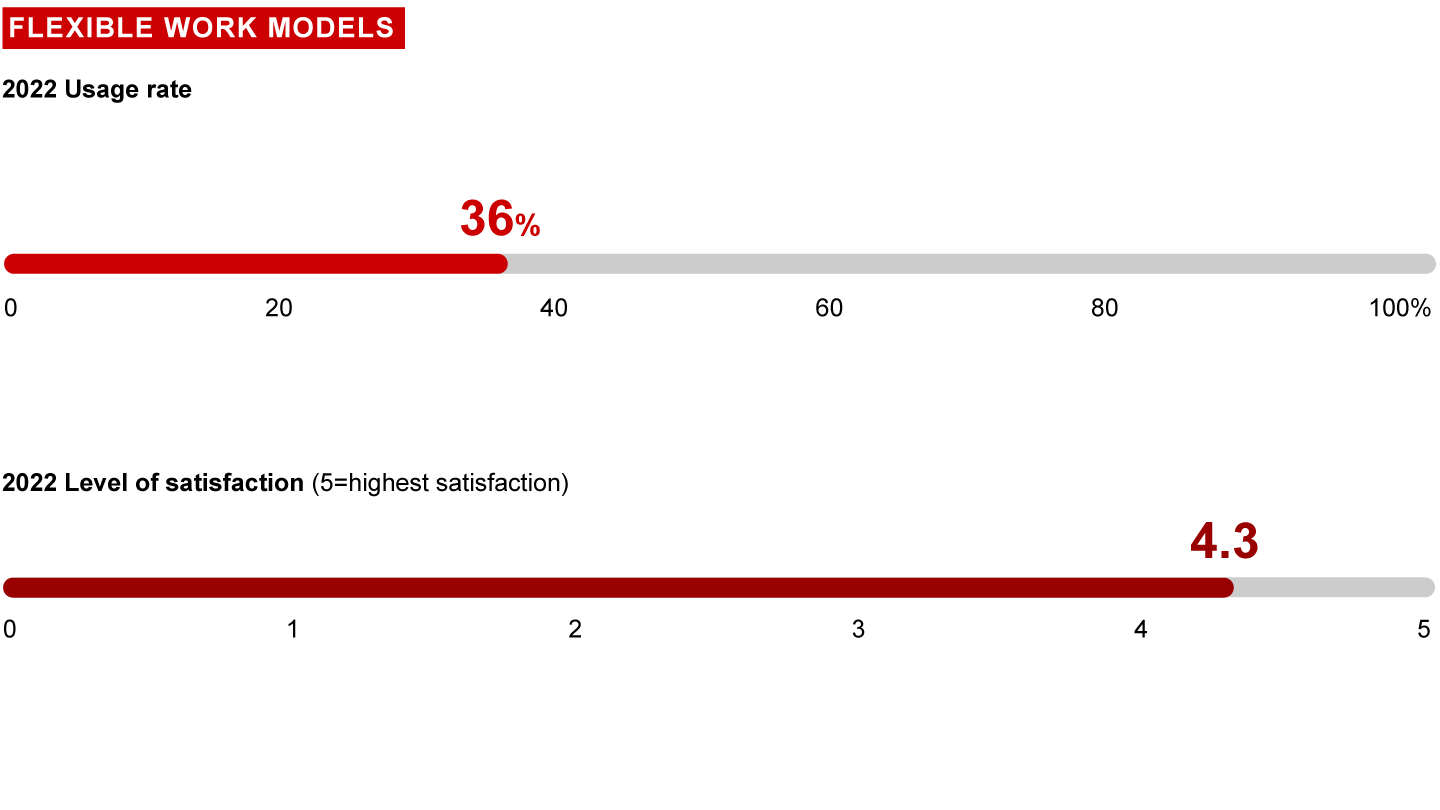Management Tools
What Is a Flexible Work Model?
Flexible Work Models are ways of working that give employees greater freedom to decide where, when, and how to collaborate with one another and to interact with customers. Depending on business and employee needs, companies may consider a range of options, such as the following examples:
Where to work options:
- Employees always work in the office
- Employees work in the office most of the time but have flexibility to work remotely
- Employees work remotely most of the time, with occasional visits to the office or other locations for team building, collaboration, and training
- Employees have flexibility to choose where they work
- Managers, departments, or teams determine on-site days
When to work options:
- Employees work during set hours and set time frames
- Employees work more focused hours for the same output (for example, the four-day work week)
- Employees work the same number of hours but with freedom to choose when those hours take place
- Employees set their own work hours to complete their objectives
- Managers, departments, or teams determine collaboration hours
How to work options:
- Employees work full time for an employer (typically 40-hour weeks, but can vary)
- Employees work part-time hours (typically less than 30 hours per week)
- Employees work for themselves or an agency (including gig workers, freelancers, etc.)

How Do You Implement Flexible Work Models?
Companies that have successfully deployed Flexible Work Models take some or all the following steps:
- Collect data on employee preferences on flexibility by segment population
- Analyze business needs and how flexibility can improve business performance (including impact on productivity, ability to collaborate, retention, etc.)
- Develop a working model that balances the needs of the business with employees’ preferences and expectations, sometimes tailoring working models to different groups by department, team, location, etc.
- Ensure that the models offer support and enable an equitable treatment of the workforce
- Educate employees about the options at their disposal
- Test new work models, collect feedback, monitor outcomes, and adjust the solutions
- Train leaders to manage a flexible workforce effectively
Related Topics
What Are Common Uses of Flexible Work Models?
Some companies may use Flexible Work Models to:
- Attract and retain more talent and talent with a broader range of skills
- Improve work/life harmony and job satisfaction for employees
- Enable managers to create attractive employment experiences for their people
- Increase productivity and improve collaboration for in-person settings
- Decrease costs associated with office upkeep and in-person work expenses

Management Tools & Trends 2023
On the 30th anniversary of our survey, managers seem surprisingly upbeat.
First published in 1월 2023
